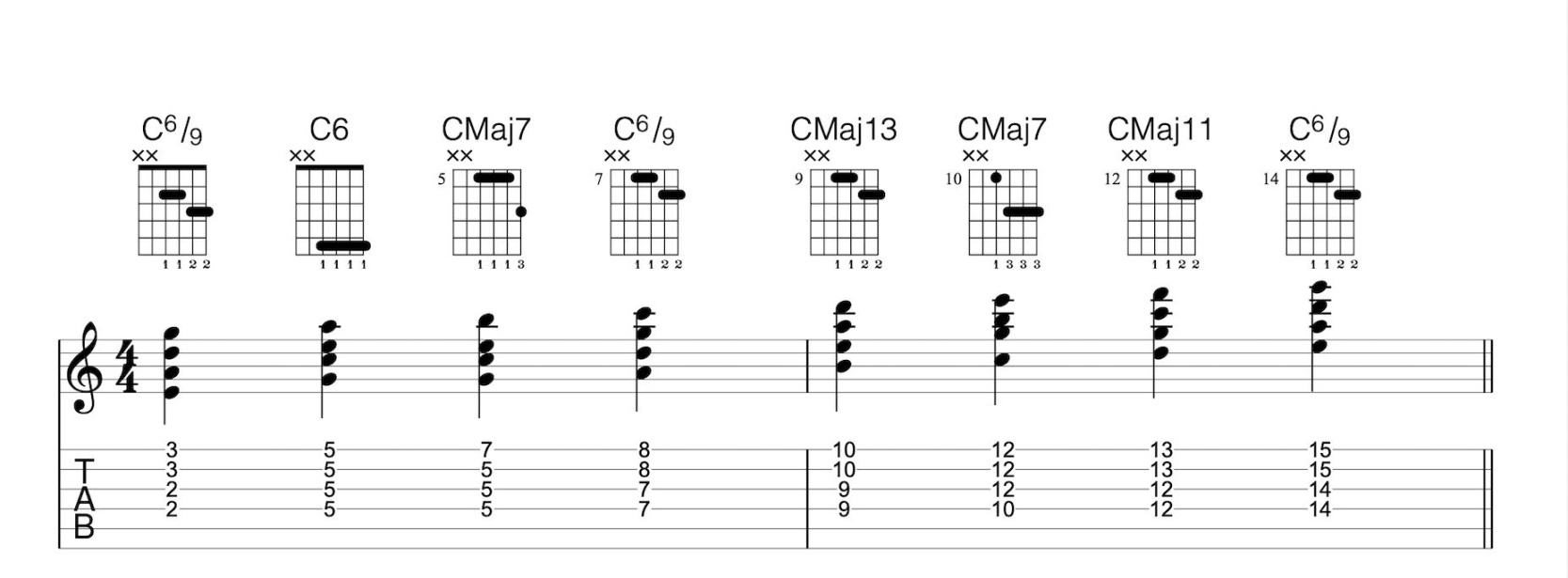Making Melodies Sing with Chords: A Guitar Adventure
So, you’re a guitarist, and you’ve got your chords down. Maybe you can strum a few songs, maybe you can even throw in some fancy voicings. But have you ever tried playing a melody and chords at the same time? That’s where chord melody comes in, and trust me, it’s a game-changer. It’s like turning your guitar into a tiny orchestra, all by yourself.
Imagine this: you’re playing a beautiful tune, and instead of just strumming behind it, you’re weaving the chords right into the melody. It’s not just about playing the notes; it’s about making them sing, making them harmonize with themselves. It’s like giving your guitar a voice, and it’s a really cool voice at that.
Why Bother with Chord Melody?
First off, it sounds amazing. It’s rich, full, and complex. It’s the kind of thing that makes people stop and listen. Plus, it’s a great way to develop your ear and your understanding of harmony. You’ll start to see how chords and melodies fit together, how they support each other. It’s like learning a secret language of music.

And let’s not forget the versatility. You can use chord melody in just about any genre, from jazz and blues to folk and pop. It’s a way to take a simple song and turn it into something special, something unique. You can take a basic nursery rhyme and make it sound sophisticated.
Getting Started: Baby Steps
Okay, so how do you actually do this? Well, it’s not as hard as it might seem. You start with a melody, a simple one. Maybe “Mary Had a Little Lamb” or “Twinkle, Twinkle, Little Star.” Then, you figure out the chords that go with it. You’re trying to find the chords that naturally fit the melody notes.
Finding the Right Chords
This is where your ear comes in. You might know some basic chord progressions, or you might need to experiment a bit. The idea is to find chords that sound good with the melody notes. It’s like finding the perfect outfit for a song. You want the chords to complement the melody, not clash with it.
Arranging the Chords
Once you’ve got your chords, you need to arrange them. This means figuring out how to play them along with the melody. You might play the chords on the lower strings and the melody on the higher strings. Or you might play the melody notes within the chords themselves. It’s all about finding a way to make it sound smooth and connected.
Using Chord Inversions
Chord inversions are your friends. They’re different ways to play the same chord, and they can help you create smooth transitions between chords. Instead of always playing the root of the chord on the bottom, you might play the third or the fifth. This can make your chord melody sound more fluid and less choppy.
Practicing and Experimenting
Like anything else, chord melody takes practice. Start slow, and don’t be afraid to experiment. Try different chords, different voicings, different rhythms. Play around with it, and see what you come up with. The more you practice, the more you’ll start to develop your own style.
Adding Your Own Flair
One of the coolest things about chord melody is that you can add your own personal touch. You can throw in some embellishments, some little fills, some fancy chord voicings. You can make it your own. It’s like putting your signature on a song.
Learning from the Masters
If you want to really get good at chord melody, it’s a good idea to listen to the masters. Guys like Joe Pass, Ted Greene, and Lenny Breau were absolute wizards at this technique. Listen to their recordings, and try to figure out what they’re doing. It’s like taking a masterclass in guitar.
Don’t Fear the Mistakes
Don’t be afraid to make mistakes. In fact, mistakes can be a great way to learn. Sometimes, you’ll stumble upon a chord or a voicing that you never would have found otherwise. It’s all part of the process.
Building Your Repertoire
As you get more comfortable with chord melody, start building your repertoire. Learn a few songs, and try to arrange them in your own way. You’ll be surprised at how much you can transform a simple song with this technique.
Expanding Your Harmonic Vocabulary
Chord melody is a great way to expand your harmonic vocabulary. You’ll start to learn more about chords, scales, and progressions. You’ll start to see how everything fits together. It’s like unlocking a whole new world of music.
Keeping it Simple
Remember, you don’t have to play complicated chords or fancy arrangements. Sometimes, the simplest arrangements are the most effective. Focus on making the melody sing, and let the chords support it.
Enjoying the Journey
Most importantly, have fun with it. Chord melody is a rewarding technique, but it’s also a challenging one. Don’t get discouraged if you don’t get it right away. Just keep practicing, keep experimenting, and keep enjoying the journey.
In conclusion, guitar chord melody is a powerful and expressive technique that can elevate your playing to new heights. It’s a blend of melody and harmony, allowing you to create rich and captivating arrangements. While it requires practice and dedication, the rewards are immense. By starting with simple melodies, experimenting with chord inversions, and learning from the masters, you can unlock a new level of musicality on your guitar. Embrace the challenge, enjoy the process, and let your guitar sing with both melody and harmony.

